Kanji Meaning “Learn” or “Study”: 学 (Mana-bu)
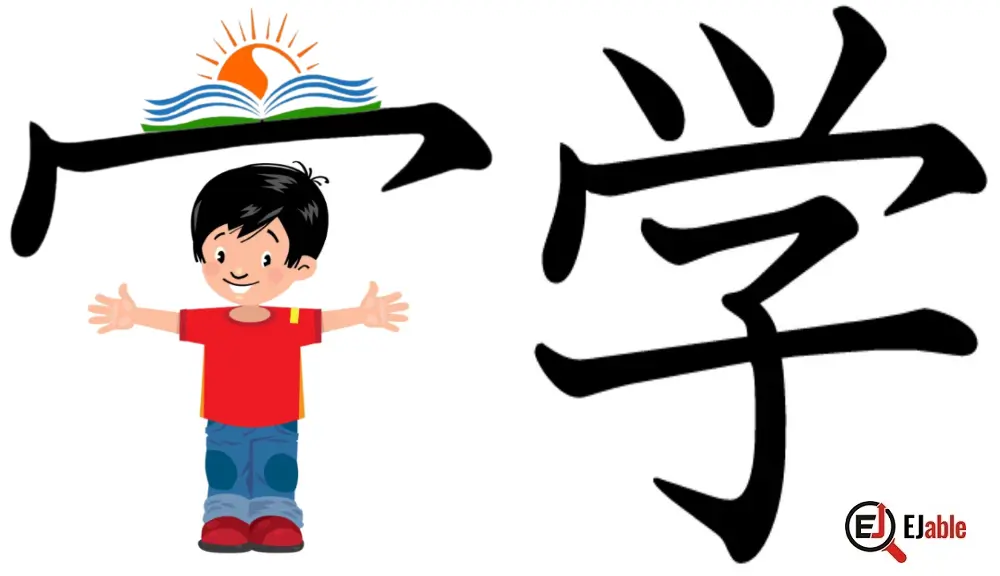
The Japanese kanji 学 means “study” or “to learn“.
The pronunciation of the Kanji 学 is “mana-bu” (まな-ぶ) in its kun’yomi (Japanese reading) and “gaku” (ガク) in its on’yomi (Chinese reading).
The Kanji 学 is constructed with 8 strokes. It is a part of the JLPT N5 syllabus (please check the JLPT N5 Kanji list), and is taught in grade 1 in Japanese schools.
Origin of the Shape of the Kanji 学 to Denote Learning
学 combines two elements. The top part is a variant of the Kanji 冖 (mike or bō), which represents a “cover” or “lid.” The bottom part is 子 (ko or shi), meaning “child”. Please note that the top part was originally a roof (house), which somehow hot corrupted to the 冖 (mike or bō) radical.
The origin of the Kanji 学 is quite philosophical and also interesting. Originally, in the Oracle Bone Script, the Kanji meaning “to learn” or “to study” depicted a house with two hands and a cross above it.
Before discussing the origin and the evolution of the current shape of the kanji 学, let’s check the following image of this kanji’s evolving construction:
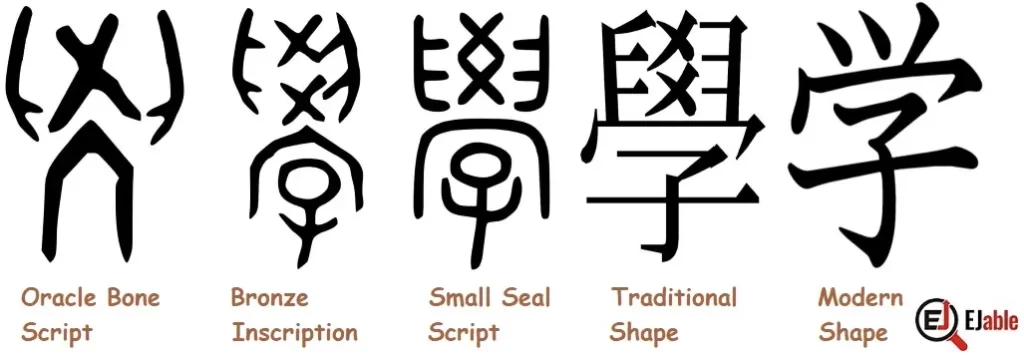
The presence of two hands (please note that not just one hand) should mean helping or caring for hands above a house. It’s like having someone who cares about people living in the house by educating them and making them learn about ways of life.
There are not many theories available for the cross above the house. However, it is safe to assume that the cross was there to indicate the crossing of hands. Why? Well, crossing of the hands means that the hands are not there to fight, and when there are two hands that are not there to fight, they are there as caring hands.
Later in the Bronze inscription, a child was placed inside the house. The Kanji to mean learning or studying kept evolving, but the current shape of 学 closely resembles the original idea of making a child learn inside a place of learning or home.
Mnemonic: How to Remember the Kanji 学
Looking at the current form of the kanji 学, it is very easy to imagine a child under a roof; however, it is difficult to relate it to learning.
Therefore, it is best to have a mnemonic to help remember it. So, let’s use the following illustration as a mnemonic to remember 学 by relating it to the concept of “Learning” or “study”:
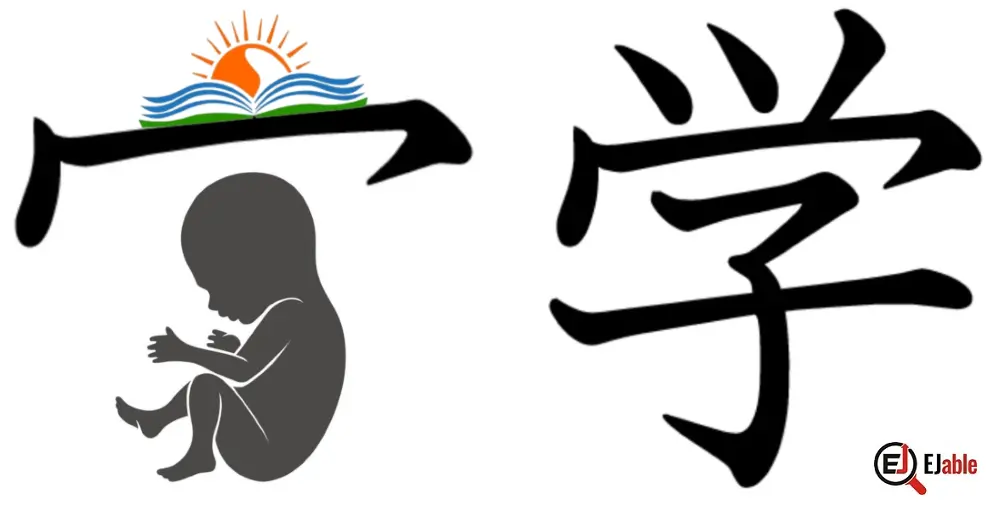
However, we can also use the illustration at the top of this article as a mnemonic.
Stroke Order for the Kanji 学
The following illustrations show the stroke order to write the Kanji 学:
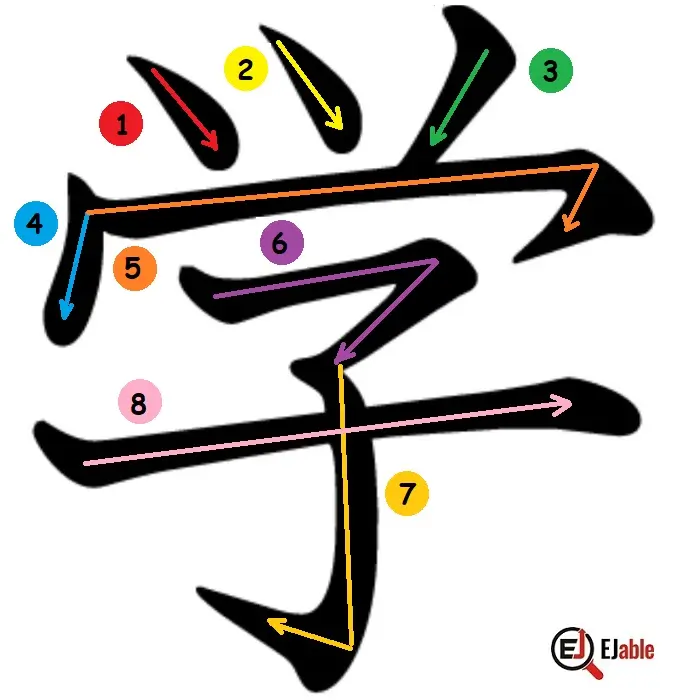
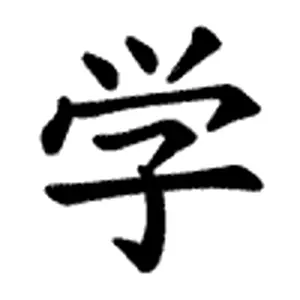
Kanji 学 in Compounded Words
The kanji 学 (Mana-bu, まな-ぶ) appears commonly in the Japanese language and forms part of many compound words. There are 235 Japanese words that begin with the Kanji 長, and it appears in 1849 words.
Examples of 学 in Compounded Kanji Characters
Following are the examples where the Kanji meaning “learning” appears in Japanese compounded Kanji characters:
- 学生 (がくせい / gakusei): Student.
- 学校 (がっこう / gakkou): School.
- 学問 (がくもん / gakumon): Academic study, learning.
- 学者 (がくしゃ / gakusha): Scholar, academic.
- 学習 (がくしゅう / gakushuu): Learning, study.
- 大学 (だいがく / daigaku): University.
- 学年 (がくねん / gakunen): School year, grade.
- 学科 (がっか / gakka): Academic subject, department.
- 学会 (がっかい / gakkai): Academic society, conference.
- 学費 (がくひ / gakuhi): Tuition, school fees.
- 学力 (がくりょく / gakuryoku): Academic ability.
- 学部 (がくぶ / gakubu): Faculty, department (in a university).
- 自学 (じがく / jigaku): Self-study.
- 学園 (がくえん / gakuen): Educational institution, campus.
- 学則 (がくそく / gakusoku): School rules.
The above compound words illustrate the use of 学 in various contexts related to education, learning, and academic environments.
Please note that the kanji 学 is not used as a Kanji radical or component in other kanji characters.
Check other Kanji characters on the page “How to Learn Kanji“.

A long-term ex-pat in Japan, Himanshu comes with an IT background in SAP consulting, IT Business Development, and then running the country operations of an IT consulting multinational. Himanshu is the co-founder and Managing Director of ReachExt K.K. and EJable.com. He is also an Advisory Board Member of a Silicon Valley AI/IoT startup.
